“A New Zealander, he came to the famous Chair of Edinburgh, took ‘time off’ to organize a medico-legal system and Institute in Egypt then returned to Edinburgh to add to his brilliance in the forensic field a natural flair for administration. He was undoubtedly the most popular Dean and lecturer in a medical subject this Scots School ever had – a reincarnation of Conan Doyle’s Dr. Bell.”
Professor Keith Simpson, CBE, 1985.
Forensic science pioneer Sir Sydney Smith (1883-1969) achieved world renown through the application of science to justice. From the edge of an Otago goldfield to the telling edge of a murder weapon, Smith learnt to read the stories of dead men – and in doing so changed the way crime was investigated and solved.
The “New Zealand village”
Smith was born on 4 August 1883, in Roxburgh, Otago. At the time Roxburgh was a hard-working migrant town of a few hundred people – a centre for gold-mining and sheep-farming. It was a place without a secondary school or a dentist, where pulling teeth became the job of the multi-tasking blacksmith. But Smith remembered Roxburgh as a energizing environment where:
“Many nationalities, professions, and trades, and most of the religions and philosophies, were represented. Mixing with them and listening to their conversation about different parts of the world, hearing them relate their strange experiences and expound strange ideas, no doubt had a stimulating effect on a youngster living in the depths of the country.”
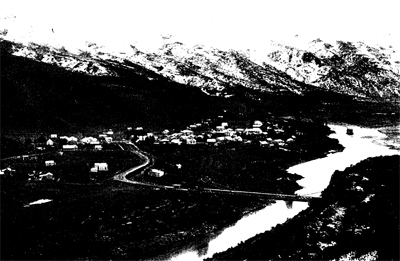
Panorama of the town in 1904. Image supplied courtesy of the Alexandra Museum, R0073.
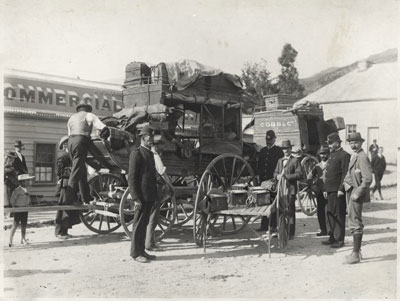
Roxburgh at the turn of the century. A gold escort in 1901. Photographer J J Ingley. Permission of the Alexander Turnbull Library, Wellington, New Zealand, must be obtained before any re-use of the lower image. Ref. no. MNZ-1736-1/2-F
Smith had an inspiring elementary school teacher, W.A Reilly, who encouraged students to “get something out of life – to go out in search of adventure.” Smith credited this teacher with his decision to go into medicine, which he saw as his passport to such adventure: “I thought of a medical career first as a means to an end. The end was to see the world, and if possible to get a place among the explorers and pioneers.”
Educating Himself
Smith was the youngest son in a large family. His father was a gold-miner who had a Shakespeare passage ready for every occasion; his mother, who already had seven children from a previous marriage, taught her son about herbal medicine. After leaving school Smith was apprenticed to the local pharmacist, Harold Grocott, who later described “Syd” as a “bright eyed, red-headed, freckle-faced lad and a little wild.”
Even as a boy Smith knew where he was going and he worked hard to get there. Money he made in a gold-dredging boom enabled him to move to Dunedin, where he worked in the Friendly Society’s Dispensary. Largely self-educated, he passed the Pharmacy Board’s exam at the age of 23, and then quickly moved on to the University of New Zealand entrance exam and medical preliminary examinations. Soon after passing these, he went to Wellington, where he took up a post as the dispensing chemist at the hospital, and studied first-year chemistry and physics at Victoria University (then College). He was finally ready to begin his adventure. As Smith tells it:
“I had never heard of forensic medicine when I decided to become a doctor. Nor for that matter was I drawn to the medical profession by a burning desire to relieve human suffering and pain. I merely picked on medicine as the most likely means of escape from a small New Zealand village into the wide world.”
Into the Wider World – Edinburgh
In 1908, aged 25, Smith set off for England. After a short period as a chemist’s assistant in London, he began the study of medicine at Edinburgh University. He graduated in 1912 with an M.B. with first-class honours, having gained a number of scholarships and awards along the way. A week later he married his Scottish fiance, Catherine Gelenick.
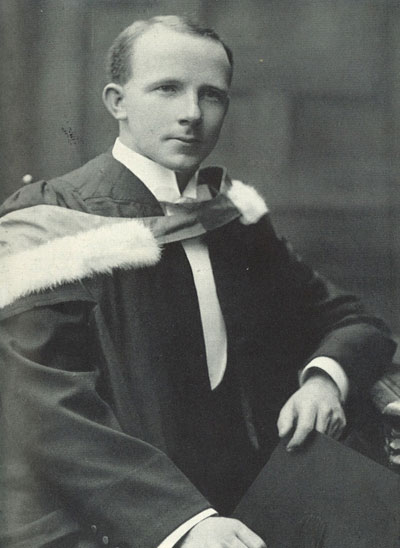
Smith on his Graduation from Edinburgh University, 1912. Frontispiece to Mostly Murder
But the direction of Smith’s future career had not yet been determined. His first job was as a locum to a doctor in Fife, where one of his first assignments was to pull out the right front molar of an “enormous coal-miner”. He must have been reminded of his Roxburgh days; only he was now the jack-of-all-trades.
The Beginnings of Forensics
Smith’s entrance into forensic science was determined only by chance, when he was offered a research scholarship to study under the dean of the medical faculty at Edinburgh. The dean was a medical-legal expert.
Edinburgh had long been an important centre for the study of forensics. As Smith explains in his autobiography, forensic medicine – or medical jurisprudence – is the offspring of two of the oldest professions in the world. The Egyptian Imhotep (c. 3000 B.C.) was both Chief Justice and Court Physician.
Forensic medicine emerged in France and Germany first, coming to Britain only later. The first British Chair of Forensic Medicine was created in 1807 – at Edinburgh University. In Edinburgh it was common practice for the Professor of Medical Jurisprudence to also be the Chief Surgeon to the City Police.
In addition, the writer Arthur Conan Doyle had worked as an assistant to one of the early members of the faculty, Dr Bell, after whom he modeled the most famous detective of all time – Sherlock Holmes.
A medico-legal expert, or specialist in forensic medicine, however, is not usually a detective. His or her role is to furnish police with specific information based on expert knowledge. They are in charge of looking at dead bodies and determining the cause and manner of death. The questions a forensic specialist asks are: “How did a person die? When did death take place? Where did death take place?” Only the question of why the murder happened – of the motive – Smith writes, “lies outside the professional scope of the medico-legal expert, and in certain cases, such as murder after sexual assault, he or she may be able to explain this too.” This may be all very familiar to the CSI generation, but in the early 20th century it was only just developing as a science.
The Hopetoun Quarry Murders
In 1913 Smith was involved in his first big case. The bodies of two children were discovered in the Hopetoun quarry near Edinburgh. Although the bodies had been in the water at least eighteen months, Smith was able to provide the police with vital information. He determined how much time before their deaths the two boys had eaten their last meal, proved that they must have walked to the quarry, and hypothesised that they had been killed by someone they knew. The two boys had never been reported missing, but Smith’s evidence led to the arrest of the children’s father, Patrick Higgins, and to Scotland’s first execution of the century. Describing this event in his autobiography, Mostly Murder (1959), Smith exhibits a mixture of pride and discomfort.
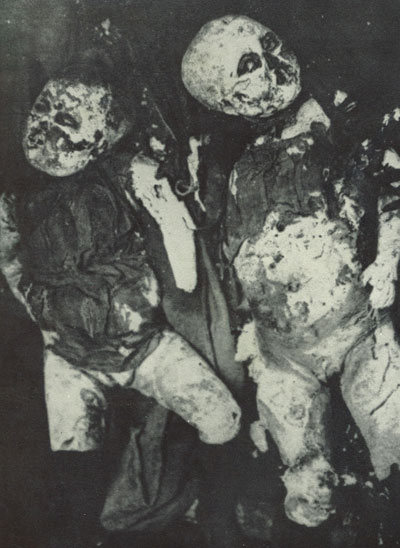
A photo of the two boys found at Hopetoun Quarry, their bodies completely transformed by ‘adipocere’. From ‘Mostly Murder’.
A committed scientist to the last, during this case Smith secreted away the heads of both children, a leg and an arm from each of them, and all their internal organs. He installed them as specimens in the Forensic Medicine Museum at the University, where they are still used as teaching examples of advanced adipocere – a form of decomposition that happens to dead bodies subject to moisture.
The War at Home
At this point Smith was still a student at Edinburgh University. He received his M.D. with honours in 1914, and set off home to New Zealand with Catherine to take up a post as the Medical Officer of Health for Otago. By the time they arrived World War I had begun. Smith was soon transferred to Wellington, where he was given the rank of major, and assigned to military duties at various camps. One of his contributions was to prove that what was thought to be a typhus epidemic in the military camp at Trentham, was in fact the disease cerebro-spinal meningitis.
This was the same outbreak that Ettie Rout and her Volunteer Sisterhood were called in to fight before they took on duties in Egypt. Like Ettie Rout, who had tried to persuade the army to address the problem of venereal disease, Smith’s innovative suggestions often fell on deaf ears. He designed a mobile medical laboratory for use in Gallipoli, but it was never sent.
Expert in Egypt
In 1917 Smith was offered a medical-legal expert role by the Egyptian Government, a post that carried with it a lectureship in forensic medicine in the School of Medicine in Cairo. He was released by the New Zealand Health Board, and travelled to Egypt on a troopship along with New Zealand reinforcements bound for the Middle East.
It was the job of the forensics section that Smith took over to review almost every important crime in the country, including nearly a thousand murders a year and many attempted murders. Smith quickly established a proper laboratory for the section, and within a few years Cairo had one of the best medico-legal installations in the world.
It was here that Smith was involved in the cases that established his reputation. In the summer of 1920 he was sent a single bone. The bone had been discovered by chance by a gang of workmen building a trench. After Smith established it was a human bone, police took over the dig. They found a body just below the surface; then another body beside it; and another beside that, until they had discovered the bodies of fourteen women all killed over the past eighteen months. The clue that broke open the case was Smith’s observation that all the women had retained their pubic hair, a practice common only among prostitutes in Egypt at that time. This evidence enabled the police to trace the murders to two men and two women. These two couples had been systematically inviting prostitutes to their home, killing them for their money, and burying their bodies. The two men and their wives were convicted.
Smith had arrived in Egypt in a period of intense revolutionary activity. Protests broke out all over Cairo and Alexandria in 1918 following Britain’s refusal to hear the country’s case for independence. Smith tells a story of heading to the university to teach one morning and coming across members of his own class “carrying the usual banners and yelling the usual slogans like ‘Death to the British!'” One of his class members ran towards him, and said, “Don’t go to school to-day, Professor. There is nobody there – we are having a revolution.” Smith heeded the advice and returned home. A few days later he had the difficult task of examining the body of a colleague who had been shot.
Despite the unstable political situation, and himself speaking no Arabic, by his own account Smith mixed fairly freely in Egyptian circles, where his identity as a New Zealander was an asset – he was seen as someone also from a country under the “iron heel of England”. At one point he advised the British First Secretary of the Residency that Britain should pull out and offer Egypt Dominion status such as New Zealand had. The Secretary responded with a request that Smith finish his whisky and leave. In February 1922 Egypt formally became an independent sovereign state, but martial law, which had been continuous from 1914, remained in effect for another year. Smith stayed on.
Forensic Ballistics
A new political crisis began on 19 November 1924, when Sir Lee Stack Pasha, the Sirdar (Commander-in-Chief) of the Egyptian Army and Governor General of Sudan was shot while driving through the streets of Cairo. Smith was to play an important role in this moment in Egyptian history, and to change the way shootings would be investigated in the future.
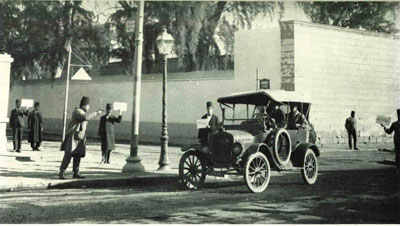
A reconstruction, staged by the Egyptian police,of the assassination of the Sirdar. From Mostly Murder
Forensic ballistics is the science of analyzing firearm usage in crimes. It involves using the marks of a bullet or cartridge-case to identify the particular weapon from which it was fired. From his position in Cairo, Smith’s opportunities for studying this new branch of forensic science were excellent. The Sirdar’s murder was one of a series of political murders, and Smith and his colleagues were able to prove that the same gun had been used for a number of these assassinations. When the suspected assassins, two brothers named Enayat, were caught, the guns found on them were immediately delivered to Smith. Smith fired off the guns, using techniques that were unique then but are now routine in shooting cases. By examining these bullets and their cartridge cases he established that a particular Colt .32 pistol had been used to shoot the Sirdar. Faced with this evidence, the Enayat brothers confessed, leading to the implication of six further accomplices in a number of political assassinations.
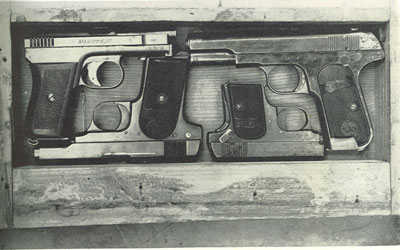
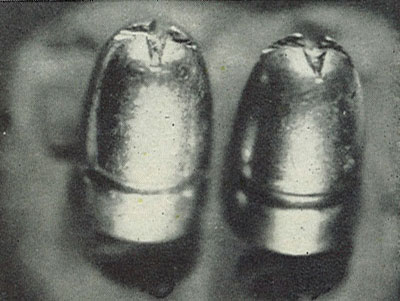
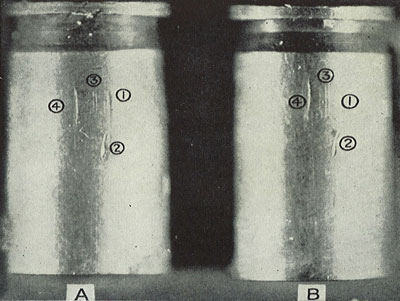
Evidence used in the Sirdar case. Top: four seized pistols; middle: a bullet extracted by Smith from the body of the Sidar and a matching bullet found in the magazine of the seized automatic; and bottom: two cartridges, one found at the crime scene, and one fired from a weapon found on the accused. From Mostly Murder
Smith’s article about the case, subsequently published in the British Medical Journal in 1926, marks the beginning of the scientific examination of firearms and projectiles. The Egyptian Government acknowledged his contribution to this case and others with an award of Commander of the Order of the Nile.
Return Home – Scotland & New Zealand
In 1927 Smith returned to Edinburgh to replace his recently deceased former mentor, Sir Harvey Littlejohn, as the Chair of Forensic Medicine. He was soon elected dean of the medical faculty, a position he held for twenty-five years. There he continued to give evidence in legal cases and often found himself on opposite sides of courtroom from the famous crown pathologist, Sir Bernard Spilsbury. In 1934 he helped to set up a medico-legal laboratory for the Metropolitan Police, Scotland Yard.
In 1935 Smith and Catherine set off on a trip around the world, intending to spend as much time as possible at his home in New Zealand. They had not been to New Zealand for nearly twenty years. Smith described the month they spent in his home country as one of ‘sheer delight’, especially his visit to Roxburgh, where he was given a civic reception. Most of his family had stayed on in Roxburgh, and two of his brothers had served as the town mayor.
As he passed through Australia on his homeward journey, Smith’s advice was once again sought on a mysterious case – the ‘Sydney shark murder’. Two fishermen had caught a fourteen-foot shark, which, when it was put on display in a Sydney aquarium vomited up a human arm. The arm was tattooed with a picture of two boxers fighting, and was quickly identified as having belonged to a James Smith. What was more difficult to determine was whether the shark had bitten the arm off whilst the man was alive, or after he was dead. On examining the arm, Sydney Smith became sure that this was a case of murder, and that the arm had actually been cut off after the man was killed. The suspected murder was linked to a major smuggling ring and arrests were made, but no one was ever convicted – the Supreme Court decided that no inquest could be held with only one limb. In 2003 this case became the basis of an episode of CSI: Miami.
On retiring from his Chair at Edinburgh, Smith took up an advisory position to the newly formed World Health Organization. At the age of 70, Smith was still involved in the ‘adventure’ he had planned from his early days in Roxburgh. He and Catherine went to Lebanon and Ceylon (now Sri Lanka), where he stayed for eight months providing advice to the government on the establishment of a medico-legal system. On returning to Edinburgh, he was elected Rector of the University where he had once been a student.
Smith’s connections to Scotland, another edge country and source of significant world innovation, had become at least as strong as his connections to New Zealand. His son, Sydney Goodsir Smith (1915-1975), who had been born in Wellington during World War I, had become an important Scots poet. The younger Smith wrote, “strangely enough for a New Zealander, in broad Scots, inclined somewhat to obscurity and bawdiness.” Sydney Goodsir Smith’s masterpiece, Under the Eldon Tree (1948) is considered to be one of the great love poems in Scots. It was left to Smith’s daughter to follow in her father’s footsteps: Catherine Mary Goodsir Smith (later Waugh) qualified in medicine at Edinburgh.
In 1955 Smith and Catherine set off on their last world trip. In Mostly Murder Smith describes his life in terms of murder cases, and his account of his final visit to New Zealand is no exception. In Auckland he became involved in the suspected arsenic murder of a Mrs Wilson by her husband: a retrial was timed so that it could coincide with Smith’s New Zealand holiday. His evidence proved vital to the defence and the husband was acquitted. Smith then spent three months at home, meeting up with other Edinburgh professors who were also in Dunedin – ostensibly to take part in University Examinations, but really to fish. He was once again given a civic reception in his hometown of Roxburgh.
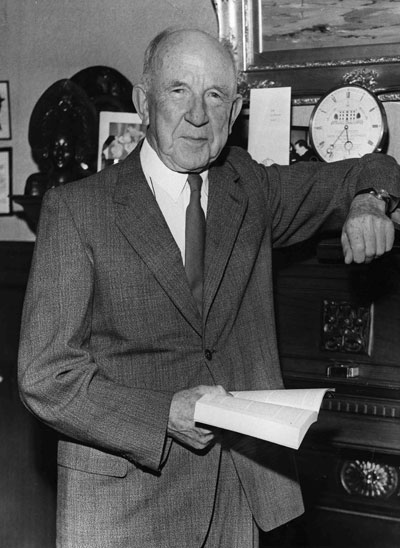
Sir Sydney on his 80th Birthday. Copyright The Scotsman Publications Ltd. Image supplied by the Alexander Turnbull Library, Wellington, New Zealand.
Legacy
Sydney Alfred Smith died in May 1969, at the age of 85, at his home, ‘Rhycullen’, in Edinburgh. His evidence had provided the turning point in many cases that made headlines throughout the world. From the assassination of the Sirdar in Egypt, to the famous ‘Sydney Shark Case’, he solved riddles through the close and impartial study of corpses, bones, fingerprints and firearms. As Smith said, “A cartridge case at the scene of an offence could prove as incriminating as if the murderer had left his visiting card.” Acknowledged internationally as a groundbreaking authority, he wrote a textbook, Forensic Medicine: A Guide for Students and Practitioners (1925), which is still widely quoted today (for example, in analysis of the Kennedy assassination). His autobiography, Mostly Murder, was acclaimed for the vivid, vital language he used to describe his work, and went into numerous editions. Smith was knighted in 1949 and received honorary doctorates from the Universities of Edinburgh and Louvain. He is fittingly described in an account of the history of Scotland Yard as a “characterful pioneer or forensic medicine” – precisely the explorer he had always meant to be.
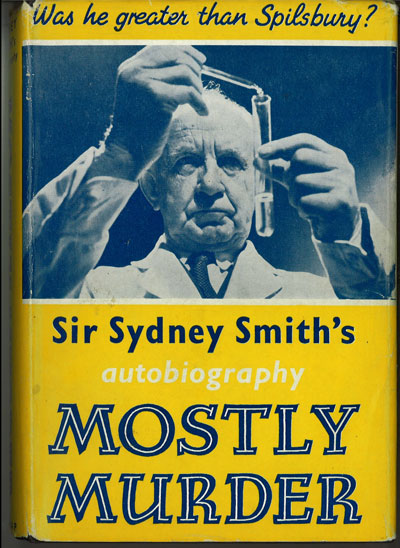
Cover of ‘Mostly Murder’, 1959.
References
Much of the factual material about Smith’s cases is taken from Smith’s entertaining autobiography, Mostly Murder. London: George G. Harrap, 1959.
Garland, Eugene. Famous New Zealanders. Christchurch: Whitcombe and Tombs, 1967. pp. 132-140.
Jeffrey, G.N. “Famous Forensic Scientist Began His Life in Otago.” Otago Daily Times, 17 April 1979.
Paul, Philip. Murder Under the Microscope: the Story of Scotland Yard’s Forensic Science Laboratory. London: Macdonald, 1990.
Simpson, Keith. Foreword to Mostly Murder. Leicester: Charnwood Publishing, 1985. i-ii.
Web
Short biography at www.biography.com [Accessed October 2006]
A slightly longer biography, and an account of his papers held at the Royal College of Physicians of Edinburgh: www.rcpe.ac.uk/library/history/reprints/sydney-smith.pdf [Accessed October 2006]
For a short biography of Sydney Goodsir Smith see: www.nls.uk/writestuff/heads/wee-smith.html [Accessed October 2006]










I attended Roxburgh District High School in the 60-70s and used to walk past Sir Sydney Smiths portrait on the wall and I only glanced at half a dozen times over those years I’m embarrassed to admit I had know idea how influential he was in his chosen field.I hope today’s students are taught about this ground breaking extraordinary man.